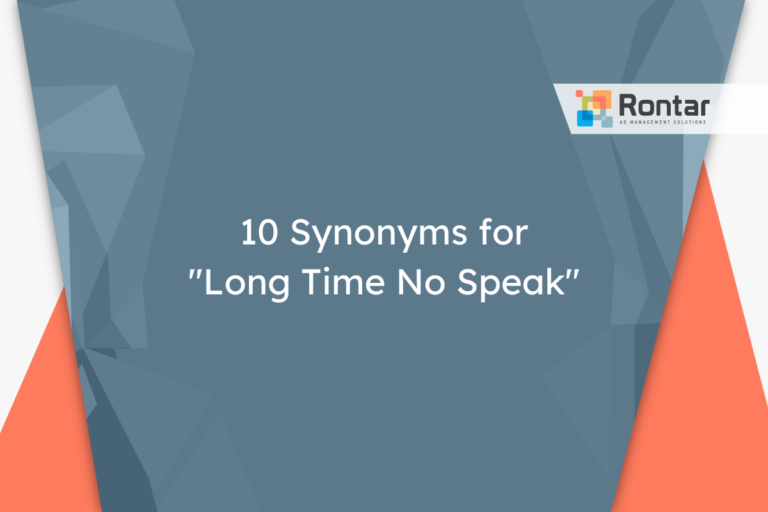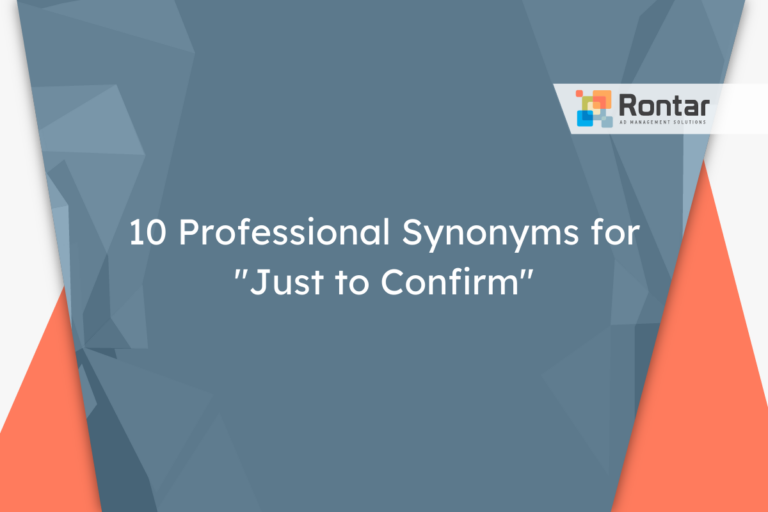12 Professional Ways to Say “You Can Reach Me At” in an Email

In professional emails, it is crucial to let people know how to contact you. However, always saying “you can reach me at” can get repetitive and stale.
In this article, we explore 12 different ways to share your contact info that keep your emails fresh and engaging. We’ll walk through examples and situations where each alternative is most effective, making your email communication smoother and more versatile.
Is It Professional to Say “You Can Reach Me At”?
The phrase “you can reach me at” is generally seen as professional and polite, making it suitable for a wide range of emails, whether they are to customers, prospects, or coworkers.
For interactions that require a level of formality, such as with potential clients or senior colleagues, maintaining professionalism is crucial. This phrase fits well in such scenarios as it directly offers a way for the recipient to contact you, simplifying communication.
It’s equally appropriate in less formal contexts, such as emails to teammates or peers, because it conveys warmth and approachability.
Here is a short example of how to use the phrase in a professional email:
Dear Ms. Thompson, Thank you for your inquiry about our graphic design services. We are excited to help bring your vision to life. Should you need any more information or have any questions, you can reach me at (555) 123-4567 or email@example.com. I’m looking forward to working with you. Warm regards, Emily Parker Graphic Designer Creative Solutions
Pros:
- It’s direct and clearly tells the recipient how they can contact you.
- It conveys a sense of openness and willingness to communicate further.
- It’s versatile and can be used in both formal and informal settings.
Cons:
- It may be considered overly formal in very casual or internal team communications.
- Without careful placement in the email, it can be overlooked by the recipient.
While “you can reach me at” is broadly acceptable, some might opt for different wording to better match the tone of their email or to stand out from typical phrasing.
12 Other Ways to Say “You Can Reach Me At” in an Email
When you want to provide your contact details in a professional email, there are various phrases you can use instead of “you can reach me at.” Here are 12 alternatives that can suit different tones and situations.
- Feel free to contact me at
- I’m available at
- Contact me via
- My contact information is
- You can contact me at
- I can be contacted at
- Reach out to me at
- Please don’t hesitate to contact me at
- To get in touch, use
- For any questions, reach me at
- Feel free to give me a call on
- You can call me on
1. Feel free to contact me at
This alternative to “you can reach me at” provides a warm and welcoming tone. It suggests that you’re not just available but eager for the recipient to reach out to you. This phrase is both professional and polite, and it’s suited for emails where you want to leave a friendly impression.
This alternative is perfect when inviting questions or further discussions from clients, prospects, or even coworkers. It implies that any form of contact is welcome, making it a great choice for service-oriented messages or when you’re establishing a new working relationship.
Here’s an example message:
Hi Samantha, Thank you for considering our services. Feel free to contact me at (555) 987-6543 for any more details or clarification. Best, Mark Hensley Customer Service Manager
2. I’m available at
This synonym emphasizes your availability and readiness to engage. It’s direct and professional, suitable for all types of email correspondents, including customers, prospects, and coworkers. This phrase works well in emails that aim to schedule meetings or calls. If the company uses a hosted contact center, customer support agents can use this phrase during a phone call to share their direct phone number for future communication.
It fits perfectly in scenarios where you want to make yourself accessible for further interactions. This option is exceptionally fitting for emails that propose times for a meeting or a call, making it clear when and how you can be reached.
See the following sample:
Hello Tom, Let's discuss your project requirements in more detail. I'm available at your earliest convenience. Please suggest a time. Warm regards, Emily Roberts Project Manager
3. Contact me via
This alternative shifts the focus to the method of communication rather than the act of reaching out. It’s equally professional and formal, ideal for instances where specific channels of communication are preferred or required.
This phrase is especially useful when you want to direct someone to contact you through a specific medium, like email, phone, or even a professional social media platform. This choice is best for situations where clarity about communication preferences is needed.
Example message for this alternative:
Dear Bridget, For further details on our partnership guidelines, contact me via email at bridget@examples.com. Best, Liam Peterson Partnership Coordinator
4. My contact information is
This approach is straightforward and unambiguous. It’s both professional and formal, leaving no room for misunderstandings about how to continue the conversation. It’s best used when the primary goal of your email is to share your contact details.
This alternative works great in emails that are part of a chain where several messages have been exchanged, and you now wish to move the conversation to another platform or mode of communication. It’s straightforward for sharing your contact details clearly and concisely.
Here is a sample email using this phrase:
Good afternoon, Alex, Please find the requested documents attached. My contact information is as follows: (555) 321-0987, alex@examples.com. Regards, Jordan
5. You can contact me at
This alternative is just as professional and polite as the original phrase but slightly more direct. It implies an openness to communication without suggesting urgency.
It’s suitable for a wide range of recipients, including customers, prospects, and coworkers. This phrasing is versatile, fitting well in both formal and informal settings. When aiming for clarity without coming off as too forward, this option serves well.
Here’s an example of how you might use this phrase in an email:
Dear Mr. Thompson, Thank you for your inquiry about our custom software solutions. For further details or to discuss your project's specific needs, you can contact me at 555-1234 or email@example.com. Looking forward to hearing from you. Best regards, Emily Patel
6. I can be contacted at
This phrase is a professional and somewhat formal alternative. It places the action on the recipient, which can make it feel less direct than other options.
Best used in situations where you want to maintain a high degree of formality, such as with senior management or in external business communications. It’s also fitting when you prefer a passive tone, making it clear that you’re available without applying pressure.
Here’s a sample message using this alternative:
Hello Colleagues, As part of our initiative to improve inter-department communication, I've compiled a report on last quarter's performance. For more information or to provide feedback, I can be contacted at ext. 789 or via email at email@example.com. Best, Jordan Smith
7. Reach out to me at
This alternative is more informal and suggests a friendly, open-door policy. It’s less formal than the original phrase, making it perfect for messages to colleagues or industry peers.
It works well in environments that encourage or have an established culture of openness and casual communication. This phrasing is ideal for internal emails, messages to long-term clients, or when you’re looking to build rapport.
Example:
Hello Team, Just a reminder about our weekly brainstorming session tomorrow. If you have any topics you'd like to add to the agenda, reach out to me at my office phone or Slack. Cheers, Alex Johnson
8. Please don’t hesitate to contact me at
This option is very polite and professional, emphasizing the speaker’s willingness to be approached. It adds a layer of courtesy to the message, suggesting that the recipient should feel comfortable initiating contact.
This alternative is especially suited for communications with new clients, external partners, or anyone you wish to reassure about reaching out to you. It’s also a great choice when you want to appear approachable and emphasize customer service or support.
A sample email using this phrase:
Dear Valued Client, Thank you for choosing our services. We are committed to ensuring your satisfaction. Please don't hesitate to contact me at 555-6789 or support@example.com if you have any questions or need further assistance. Warm regards, Samantha Lee
9. To get in touch, use
This alternative is straightforward and slightly informal, making it a good choice for more casual or friendly messages. It suggests a relaxed way of initiating contact.
It’s particularly effective in messages where you want to keep the tone light and friendly, such as emails to team members, close clients, or when fostering a community feel. This phrasing encourages communication without making it feel like a formal request.
Here is how you might incorporate this into an email:
Hey everyone, I'm organizing a team lunch for next Friday to celebrate our recent project success. To get in touch, use my mobile or just drop by my desk. Can't wait to see you all there! Best, Liam Chen
10. For any questions, reach me at
This phrase is informal yet professional, making it clear that you’re open to queries. It’s particularly useful for instructional or informational emails where you expect the recipient might have follow-up questions.
Perfect for emails to students, new employees, or in any situation where you’re providing guidance and expect that the recipient might need further clarification. This alternative fosters a helpful and approachable atmosphere.
For example:
Hello New Interns, Welcome to the team! In your welcome packet, you'll find a lot of useful information about our company policies and your role. For any questions, reach me at my direct line or office email. Best wishes on your first day, Michelle Rodriguez
11. Feel free to give me a call on
This alternative is both informal and polite, emphasizing a personal touch by inviting a phone call. It’s less formal than some of the other options, making it ideal for when you want to offer a more personal line of communication.
This phrase is best used with recipients with whom you have an established relationship, or when trying to offer direct support or assistance. It conveys a sense of warmth and personal availability.
An example of its use:
Hi Team, I'll be working from home this Thursday but will be fully accessible for any project discussions or urgent matters. Feel free to give me a call on my cell if anything urgent comes up. Kind regards, Tom Bennett
12. You can call me on
Using “You can call me on” as an alternative to “You can reach me at” leans more towards the informal side but maintains a professional tone. It’s a direct way of specifying your preference for a phone call over other forms of communication. This phrase immediately makes it clear that you are open to a voice conversation, which can sometimes expedite the resolution of complex issues or more personal interactions.
This alternative is especially fitting when you’re looking to establish a more personal connection with the recipient, such as with prospects, clients you’ve already warmed up to, or coworkers you have a friendly relationship with. It suggests a readiness for a direct and immediate form of communication, making it perfect for situations requiring quick feedback or for discussions that are better suited for a phone call than an email chain.
Here is a sample email using “You can call me on”:
Hi Alex, You can call me on my direct line, 555-1234, during office hours. Looking forward to hearing from you soon. Best regards, Emily Thompson
Final Thoughts
Switching up how you say “you can reach me at” in your emails can make a big difference in how your message is received. Using a variety of phrases keeps your communication interesting and shows that you care about how you connect with others.
Whether you’re writing to a customer, a coworker, or a potential business partner, the right choice of words can set the tone for a positive and professional relationship. So, try out these alternatives in your future emails to find the best fit for each situation.






